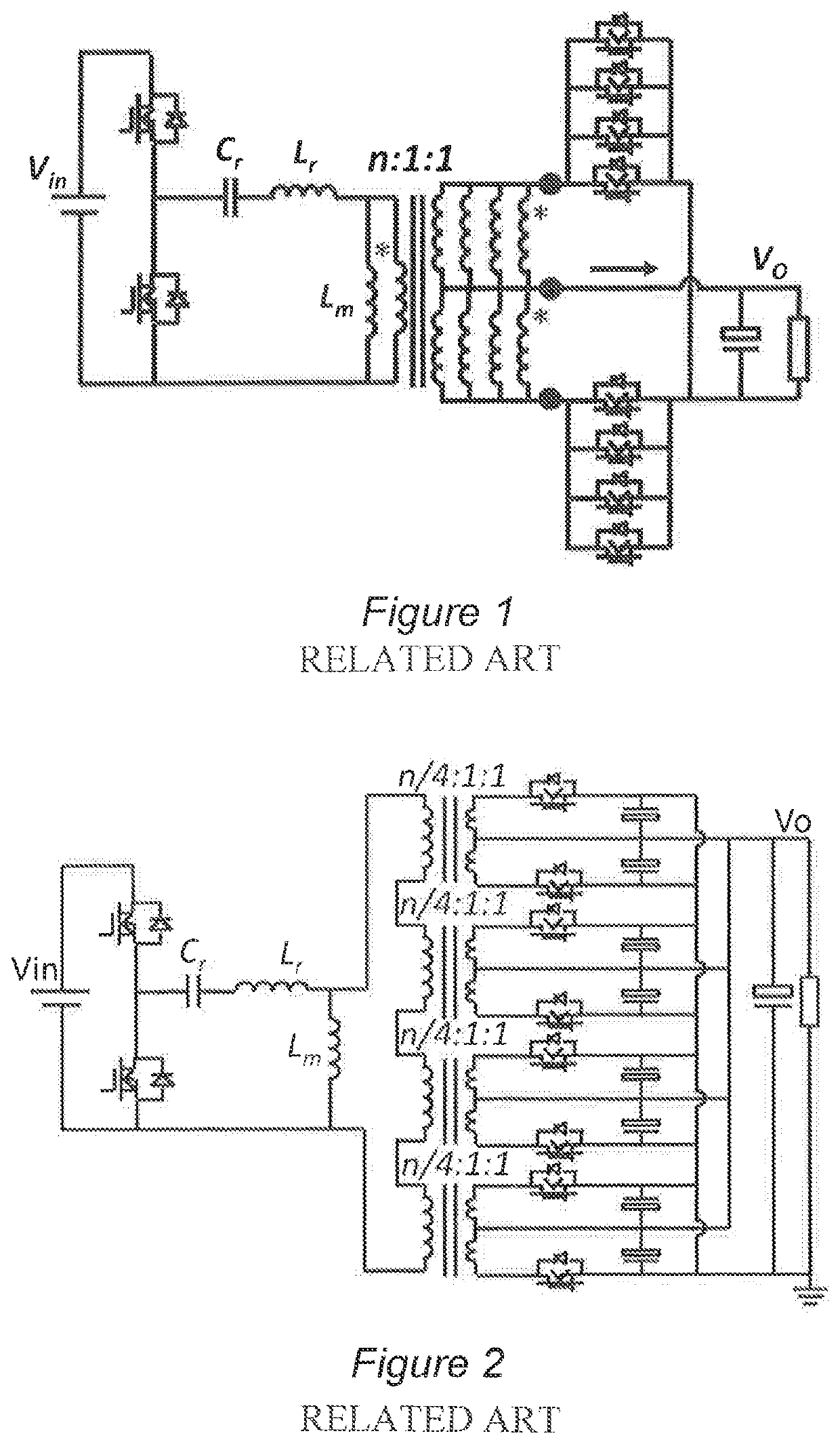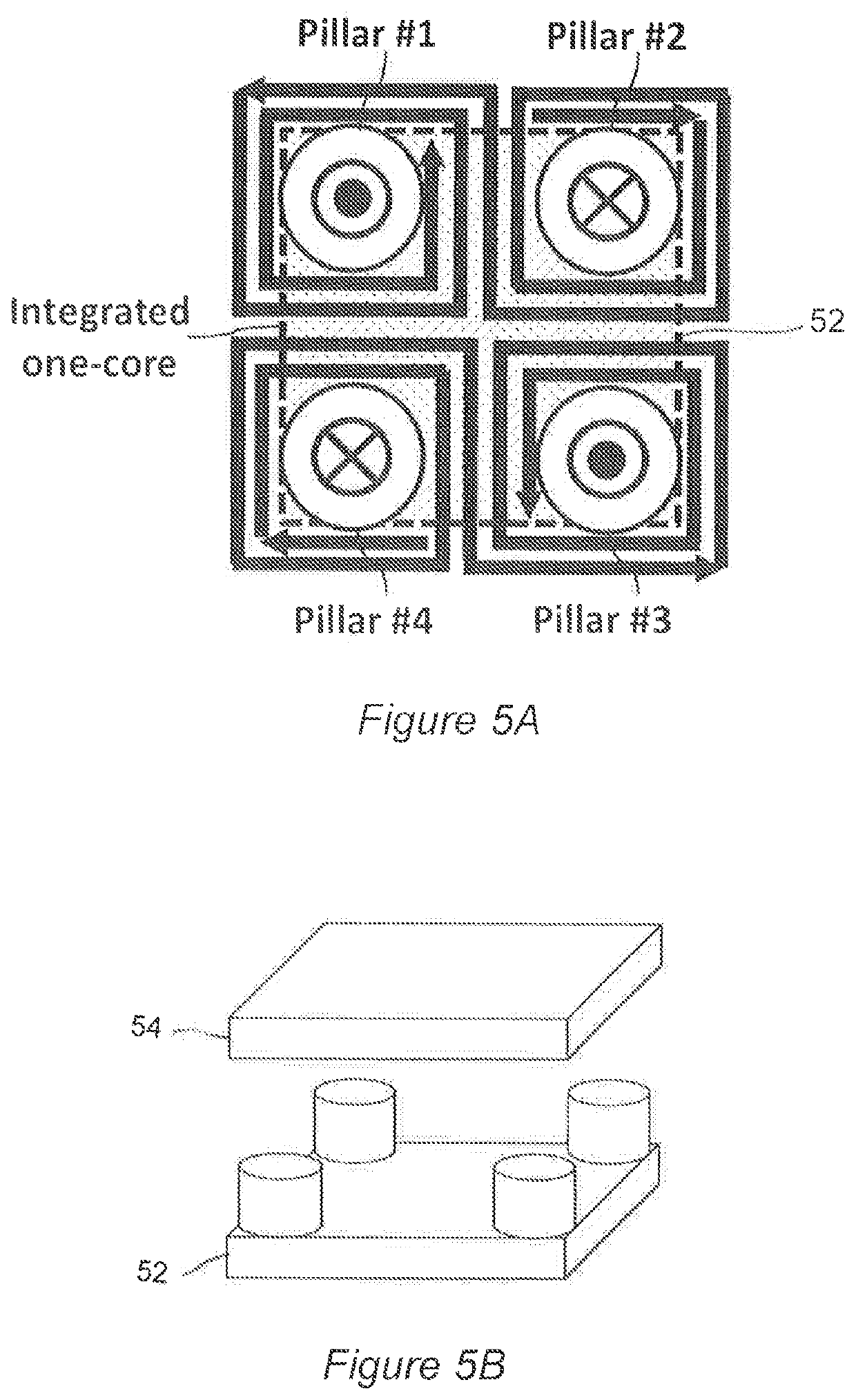Matrix transformer and winding structure
a transformer and matrix technology, applied in the field of matrix transformers, can solve the problems of significant termination loss, significant imbalance in current sharing, termination point between secondary windings and synchronous rectifiers, etc., and achieve the effect of substantially identical electrical characteristics and performance, reduced core weight and volume and/or core loss
- Summary
- Abstract
- Description
- Claims
- Application Information
AI Technical Summary
Benefits of technology
Problems solved by technology
Method used
Image
Examples
Embodiment Construction
[0024]Referring now to the drawings, and more particularly to FIG. 1, there is schematically shown a conventional design of a DC / DC converter for a large voltage step-down, high current application. It should be appreciated that the power converter design illustrated in FIGS. 1 and 2 and the design of FIGS. 3 and 4 are generalized and arranged to facilitate an understanding of the problems addressed by the invention and are not admitted to be prior art as to the present invention. These Figures have thus been labeled “Related Art”. Also, for convenience and clarity, the illustration and discussion of both the related art of FIGS. 1-4 and the following discussion of the invention will assume a division of the high current portion of the power converter into four branches while any number of separate parallel branches can be provided as the load requirements and the cost of electrical elements having a given current capacity and rating may dictate. Further, for clarity and convenience...
PUM
| Property | Measurement | Unit |
|---|---|---|
| magnetic | aaaaa | aaaaa |
| electrical resistance | aaaaa | aaaaa |
| conduction losses | aaaaa | aaaaa |
Abstract
Description
Claims
Application Information
 Login to View More
Login to View More - R&D
- Intellectual Property
- Life Sciences
- Materials
- Tech Scout
- Unparalleled Data Quality
- Higher Quality Content
- 60% Fewer Hallucinations
Browse by: Latest US Patents, China's latest patents, Technical Efficacy Thesaurus, Application Domain, Technology Topic, Popular Technical Reports.
© 2025 PatSnap. All rights reserved.Legal|Privacy policy|Modern Slavery Act Transparency Statement|Sitemap|About US| Contact US: help@patsnap.com



